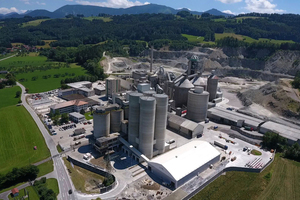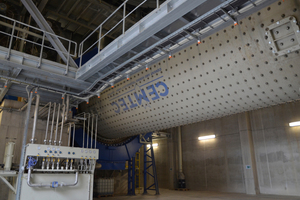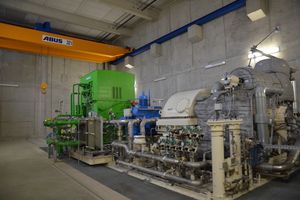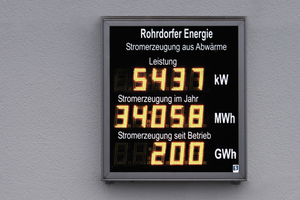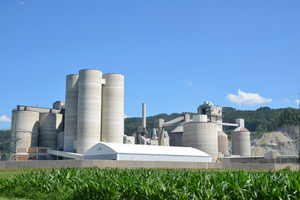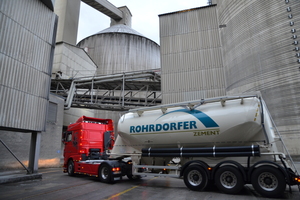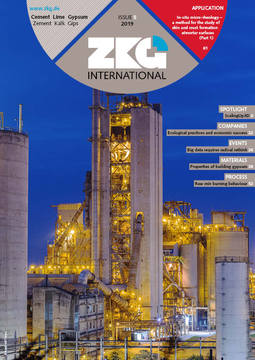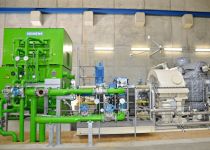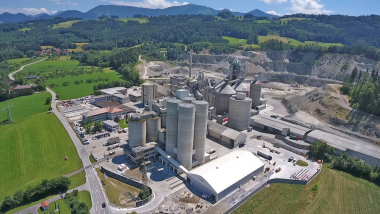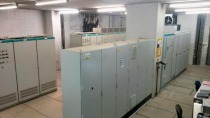Ecological practices and economic success go together well
Since 2006, the Rohrdorfer Group has been investing in the future of Rohrdorf Cement Works with a project entitled “CEM2020”. Apart from aiming for economic success, of course, those efforts have also been focusing on environmental protection. For a total of € 150 million, the production site has been secured for the long term, energy conservation measures implemented and lower emissions achieved.
Cement production in Rohrdorf runs all the way back to 1930, when a quarry-operating entrepreneur by the name of Georg Wiesböck decided to start producing cement. Together with his brothers, Ludwig and Andreas, he established the Rohrdorf cement plant from the humblest of beginnings. Now, that very plant is the parent company of all businesses belonging to the Rohrdorfer Group. From the very beginning, the Rohrdorfer corporate objectives have included carrying responsibility for people and the environment.
The Südbayerisches Portland-Zementwerk Gebr. Wiesböck & Co. GmbH, as the nearly 90 year-old company’s official name goes, not only makes and sells cement, but is also active in the areas of sand and gravel, ready-mix concrete, prefabricated building elements and concrete products - with a staff of nearly 1900 working at 130 regional locations in Bavaria, Austria and Italy, all under the brand name Rohrdorfer Gruppe.
Sustainable development for present and future generations
At the cement plant in Rohrdorf, environmental protection is a top priority for stakeholders and executives alike. The 12-year modernization project “CEM2020”, for example, focused not only on economic and technical goals. Other points of main investment effort included improving energy efficiency and gradually reducing emissions.
The plant’s new technology enabled a 259500 t annual reduction in CO2 output. That amounts to more than a quarter of the emissions level that existed when the project was launched in 2006. Also, the use of alternative raw materials for production means that less rough rock is now being consumed.
Energy conservation as main point of interest
The project began in 2006 with an investment in a raw mill with a dust-control system. Then came a modern, energy-efficient pendulum-grate cooler in 2011. Since then, some 10000 t of hard coal have been saved each year: That corresponds to an annual reduction in CO2 emissions of approx. 28000 t.
For a long time now, the company has also been pressing ahead on the use of alternative fuels. In fact, the Rohrdorfer Group even includes its own supplier of alternative fuels for cement plants: Dettendorfer Wertstoff.
The Rohrdorf plant was one of the first to receive a selective catalytic reduction system for dealing with nitrogen and ammonia emissions. In that connection, the company has contributed valuable groundwork of its own by carrying out research on an in-situ facility for five years before the plant was actually implemented with the help of an engineering contractor. Though the system already came into operation in 2011, it is nonetheless in full compliance with the daily NOx emission limit of 200 mg/m³ that only came into force this year.
Company-owned power plant covers some 30 % of electricity requirements
In 2012, the company commissioned its own power plant at a cost of € 33 million. The system’s electric output is generated exclusively from previously unused thermal energy extracted from the rotary kiln’s waste heat. While the unused portion of waste gases used to be cooled from 450°C to 180°C with water, that heat is now put through a heat exchanger to generate steam. The superheated steam drives a turbine that in turn drives an electric-power generator. The exhaust steam is then liquefied and forwarded to a steam-generating heat exchanger. Thus, the cement plant is now able to generate roughly one-third of its own power requirement with energy derived from kiln exhaust gases.
On 12.12.2018, the total amount of electricity that the Rohrdorf cement plant’s waste heat power generating system has contributed to the facility’s power requirement reached 200 GWh. “With that enormous amount of self-generated electricity,” notes Rohrdorfer Group CEO Mike Edelmann, “we could have operated our cement plant for two years with no need to purchase any external power.”
On average, the Rohrdorfer generator puts out about 30 GWh per year. Since all that electricity does not have to be drawn from the public grid, it cuts the plant’s CO2 emissions by 15750 t/a.
Cement mill as core component of investment
The core component of the recently completed € 40 million project is the cement mill, which further improves both the plant’s productivity and its energy efficiency. In place of two small, outdated systems, a single new cement mill with a mill pipe measuring 4.6 m in diameter and just over 14 m in length was installed. The new mill requires no supplementary oil combustion system, so it saves more than 150000 l (1.5 million kWh) of fossil fuel each year. The recovered heat from the mill is used for drying the blast-furnace slag.
In addition, a new on-site transport concept and four new cement silos have optimized the cement loading and dispatch operations. A total storage capacity of 24000 t and four loading lanes all help accelerate the cement loading process. At each silo, as many as four trucks can be loaded simultaneously in just 12 minutes. Noise abatement measures were implemented to reduce noise emissions.
Outlook
The measures taken over the past 12 years have made the cement plant fit for the future. So, what comes next?
Digitization is also an issue at the Rohrdorf cement plant. In our view, digitization has been gaining ground at the plant since the 1990s, when sampling, for example, was already fully automated. Now, at Rohrdorfer’s ultra-modern control center, the entire production chain can be monitored by a handful of employees. Large volumes of data are now being recorded, and one of the team’s next tasks will be to evaluate the data yield even more closely in order to identify further potential savings. The overriding motto, though, is “We want to remain master of the process!”
In order to keep pace with rapid developments in the field of digitization, the company is actively involved in promoting young talent. This begins with the training of our own industrial personnel, continues on with student-support activities, e.g., for bachelor theses, and includes the cultivation of our own technical specialists and operations managers. Hatschek cement works, a well-known supplier of special building materials, has a wide range of options for keeping the group’s managerial personnel up to date on all the latest technology.
//www.rohrdorfer.eu" target="_blank" >www.rohrdorfer.eu:www.rohrdorfer.eu

